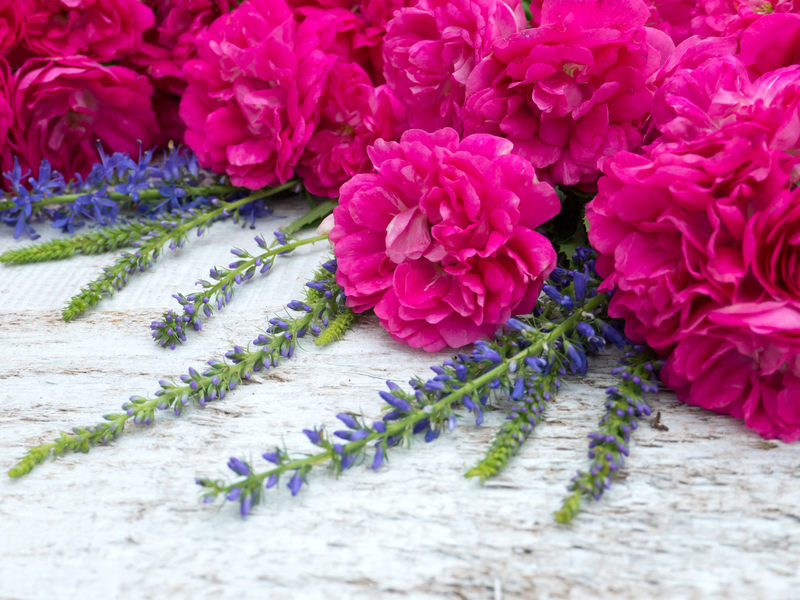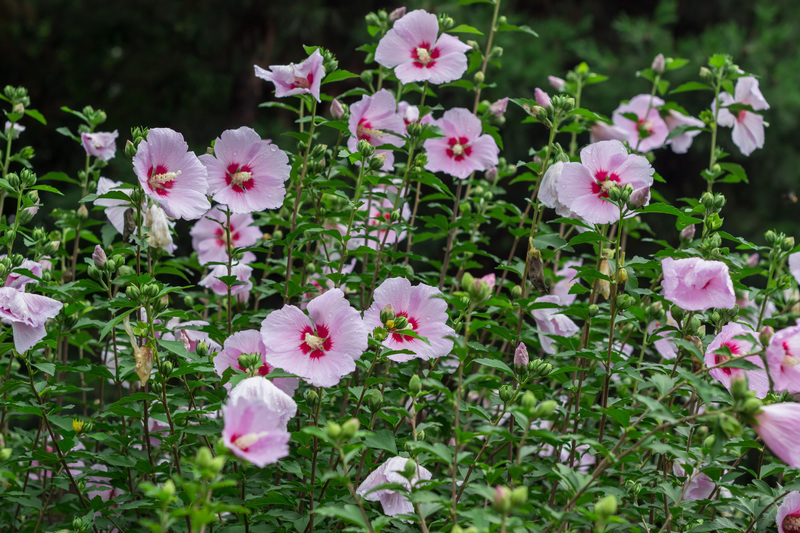Step into the World of Orchids with Confidence
Posted on 23/09/2025
Step into the World of Orchids with Confidence
Orchids, with their mesmerizing beauty and vast variety, have enchanted gardeners and plant enthusiasts for centuries. If you're considering branching out into this fascinating world, our comprehensive guide will help you step into the world of orchids with confidence. Whether you're a first-time plant parent or an avid collector ready for new challenges, understanding orchid care, selection, and propagation is key. Let's demystify orchids and set you up for dazzling success!

The Allure and Mystery of Orchids
There are over 25,000 naturally occurring species of orchids and more than 100,000 hybrids. Their blooms vary from delicate and miniature to spectacular and showy, with colors and forms unmatched in the plant kingdom. Orchids symbolize luxury, love, and beauty and have a reputation for being "difficult." However, with the right information, anyone can care for these remarkable plants.
Common Misconceptions About Orchid Care
- Myth: Orchids are impossible to grow at home.
- Fact: Most orchids are surprisingly resilient and make excellent houseplants.
- Myth: Orchids only bloom once, then die.
- Fact: With the correct care, orchids rebloom year after year.
- Myth: Only experts can cultivate orchids successfully.
- Fact: Beginners can confidently step into orchids and enjoy outstanding results.
Understanding Orchid Varieties
To step confidently into the world of orchids, it's vital to learn about the most popular types that thrive indoors. Some of the most beginner-friendly varieties include:
- Phalaenopsis (Moth Orchid): Perhaps the most popular home orchid, Phalaenopsis feature long-lasting, generously-sized blooms.
- Cattleya: Known as the "queen of orchids," Cattleyas have fragrant and ruffled blooms and symbolized wealth in Victorian England.
- Dendrobium: This diverse genus flourishes in many climates, offering a range of flower color and form.
- Oncidium (Dancing Lady Orchid): Recognizable by their abundant, butterfly-like blossoms.
- Paphiopedilum (Lady's Slipper): Unique pouch-shaped flowers make these orchids collector favorites.
Each orchid type has distinct preferences and characteristics, but all can thrive when their fundamental needs are met. Discovering the best orchid species for your environment ensures your journey starts smoothly and boosts your confidence as an orchid grower.
Essential Orchid Care: The Building Blocks of Success
When you step confidently into orchid growing, you'll discover that orchids aren't as finicky as their reputation suggests. Let's break down essential care guidelines for healthy, beautiful plants.
1. The Perfect Environment for Orchids
- Light: Most orchids prefer bright, indirect sunlight. Windows with eastern or western exposure are ideal. Avoid harsh midday sun to prevent leaf scorching.
- Temperature: Daytime temperatures between 65-75?F (18-24?C) and cooler nights mimic natural conditions. Avoid exposure to drafts or sudden temperature swings.
- Humidity: Orchids love humidity (40-70%). Grouping plants, using trays of water with pebbles, or a room humidifier can meet their needs.
- Air Circulation: Good airflow prevents disease. Place a fan nearby set to low, ensuring not to blow directly on the plants.
2. Water Wisely
Overwatering is the most common threat to orchids. A good rule of thumb is to water orchids once a week, letting the medium dry slightly between sessions.
- Use room-temperature water, preferably rainwater or distilled water.
- Never let orchids sit in excess water; ensure pots drain freely.
- Water in the morning to allow leaves time to dry and reduce fungal risk.
3. The Right Potting Medium and Repotting
Unlike traditional houseplants, orchids grow in bark, moss, coconut husk, or specialized mixes. Repot your orchid every 1-2 years to ensure healthy root growth.
- Choose a potting medium that promotes air circulation and doesn't hold excess moisture.
- Repot when the medium breaks down, roots are overcrowded, or your orchid outgrows its container.
- Always use sterilized tools to prevent the spread of disease.
4. Feeding Orchids
Feeding is simpler than you might think. Use a balanced orchid fertilizer (20-20-20) diluted to half strength every two or three weeks when the plant is actively growing.
- Reduce fertilizer applications when the plant is resting (not producing new growth).
- Flush pots monthly with pure water to prevent mineral buildup.
5. Encourage Reblooming and Flowering
Many new orchid growers struggle with getting orchids to rebloom. To step confidently into the world of orchids, understand what your plant needs:
- Temperature variation: Many orchids require a difference between day and night temperatures to initiate buds.
- Light intensity: Increase light gradually after blooming ends to support new growth and spikes.
- Patience and careful watering: Avoid overfeeding, don't allow roots to stand in water, and be patient--orchids often rest between blooms.
Orchid Propagation: Growing Your Collection
As you gain confidence, you may want to expand your collection. Orchid propagation can be achieved by division or from keikis (baby plants).
- Division: Best for sympodial orchids (like Cattleyas) with multiple pseudobulbs. Gently separate bulbs, ensuring at least three are connected for each new plant.
- Keikis: Some orchids (like Phalaenopsis and Dendrobium) occasionally produce small plantlets, or keikis, on flower stems. When roots are 2-3 inches long, gently remove and pot them up.
Propagation requires patience but is highly rewarding. Each new plant is a chance to continue your orchid journey and share the experience with fellow enthusiasts.
Common Orchid Pests and Problems: Prevention and Treatment
Even the most confident growers encounter challenges. Here's how to identify and resolve the most common orchid issues:
1. Yellow Leaves
- Usually a sign of overwatering, insufficient light, or natural leaf aging.
- Assess growing conditions and adjust as needed.
2. Root Rot
- Caused by overly wet medium and stagnant air.
- Remove affected roots, repot in fresh medium, and improve drainage/airflow.
3. Pests: Mealybugs, Spider Mites, Aphids
- Inspect plants regularly. Wash leaves with soapy water, or treat severe infestations with neem oil or insecticide labeled for orchids.
How to Select the Perfect Orchid: Tips for Confident Orchid Shopping
Shopping for your first or next orchid can seem daunting, but with these tips, you'll feel well-prepared:
- Healthy Roots: Look for plump, green or silvery roots.
- Vibrant Leaves: Avoid plants with black spots or yellowing.
- Check for Pests: Carefully inspect under leaves and around the base.
- Blooming Status: If you want long-lasting flowers, select an orchid with buds yet to open.
- Tag or Identification: Reliable sellers label the orchid with genus and species.
Expanding Your Orchid Know-How
Ready to take your expertise to new heights? There's a vibrant, global community of orchid lovers eager to share their passion. Consider joining orchid societies, local clubs, and online forums. Attending shows and exhibitions exposes you to rare varieties, expert tips, and cutting-edge research. Stepping into the world of orchids with confidence means continuous learning and embracing the wonders of the entire orchid family.
Recommended Resources
- American Orchid Society
- Local botanical gardens often have orchid exhibits and workshops.
- Books such as "Orchid Basics" and "The Orchid Whisperer".
- Online forums: OrchidBoard, Reddit's r/orchids.

Answers to Your Orchid Questions
Frequently Asked Questions from New Orchid Growers
-
How often should I water my orchid?
Most orchids prefer to dry out slightly between waterings. Water once a week, adjusting based on humidity and temperature. -
Why are my orchid's leaves wrinkled?
This is typically a sign of dehydration or root problems. -
Can I grow orchids in regular potting soil?
No. Use specialty orchid potting mediums for healthy roots. -
How can I make my orchid rebloom?
Provide adequate rest after flowering, ensure a night temperature drop, and gradually increase light.
Conclusion: Begin Your Orchid Adventure Today!
To step into the world of orchids with confidence is to embark on a joyful, rewarding, and ever-surprising journey. Orchids are accessible to everyone, not just botanical experts. With the foundation outlined above, you can grow, nurture, and even propagate these dazzling plants.
Remember: Patience, observation, and gentle care are the secrets to orchid success. In time, you'll enjoy blooms beyond your wildest dreams.
So, why wait? Step confidently into the world of orchids today--and let their beauty transform your home and spirit.

